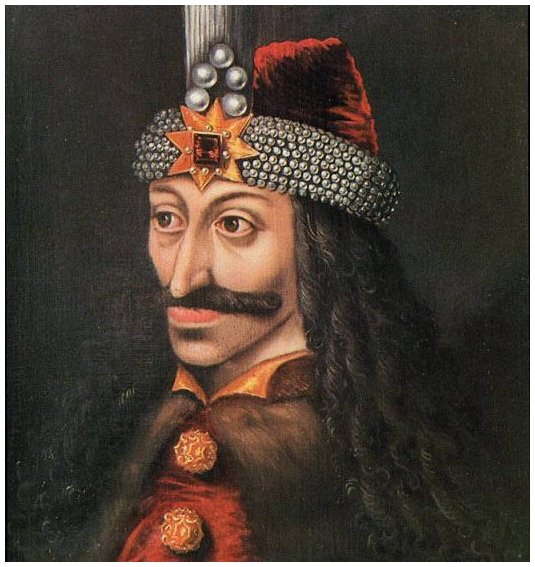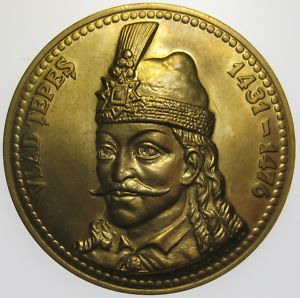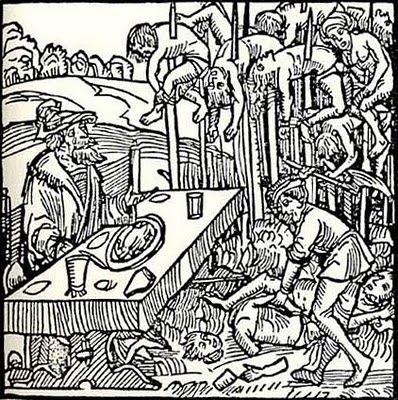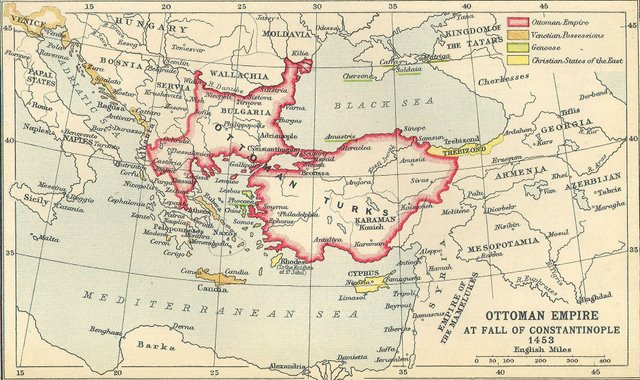


Copyright © 2011 James R. Clifford. All Rights Reserved.
A 2007 National Indie Excellence Award-Winning Finalist
As the last days of September slowly fade I can feel the presence of the Ghosts of October creeping in like the gradual darkness of a cold, dark winter night. October, my favorite month of the year is finally here and with it brings the most wonderful of all holidays—Halloween.
Who doesn’t love Werewolves, Ghouls, Goblins, Spooks and Monsters? And in today’s culture probably the most favorite creature of the unliving are those blood-sucking atrocities known as Vampires.
And we can all be thankful to Bram Stoker and his gothic masterpiece Dracula for the creation of the Vampire legend. From his pen sprang the character Count Dracula who would leave his coffin at sundown to feed upon the innocent blood of the living. Many historians believe that Bram Stoker’s story of the evil vampire Dracula was actually based upon a real life prince named Vlad Dracul III who ruled a portion of Romania during the 15th Century.
The history of Vlad Dracul is surrounded by intrigue, myths, contradictions and death but one thing is for certain, Bram Stokers’ novel has forever linked Vlad Dracul as the real life inspiration for the purest form of evil that exist in those creatures of night we call Vampires.
October
VLAD TEPES
THE REAL LIFE INSPIRATION FOR THE VAMPIRE MYTH AND COUNT DRACULA


 | ||||||
Free Registration to Win
the Vlad coin to left!
Vlad Tepes aka Dracula
Gold-Palted 60mm Romanian Medal.
Enter email
Let’s first explore a little bit about Vlad and the world he lived in:
Vlad’s family name of Dracul originated from the Latin word Draco meaning dragon because Vlad’s family was a member of the prestigious Order of the Dragons. The Order of the Dragon was a chivalric, semi-military and religious society created in 1837 by the Holy Roman Emperor. The Order’s main purpose was to defend the Catholic Church from its enemies, who at that time was the Muslim Turks who were constantly invading the Balkans.
Vlad’s family were landowners and military rulers of Wallachia which was a province of Romania. A great physical description of Prince Vlad still exists today thanks to a painting that survives to this day and a description by Nicholas Modrussa, a papal legate to Pope Pius II.

VLAD TEPES

He was not very tall, but very stocky and strong, with a cruel and terrible appearance, a long straight nose, distended nostrils, a thin and red-dish face in which the large wide-open green eyes were enframed by a bushy black eyebrows, which made them appear threatening. His face and chin were shaven but for a mustache. The swollen temples increased the bulk of his head. A bull’s neck supported the head, from which black curly locks were falling to his wide-shouldered person.
But to better understand Vlad we need a quick snapshot of the tumultuous world that he occupied. Vlad was born on December 1431, the year that Joan of Arc was burned at the stake for Heresy. This period is known as the Medieval Period or Middle Ages which began in the 5th Century with the fall of the Western Roman Empire and lasted until the end of the 15th Century. The Late Middle Ages was a period that was highlighted by calamities, upheaval, famines and constant war. Vlad’s territory that he ruled was in the center of a geopolitical storm because Eastern-Central Europe was in a constant battle with not only its own neighboring countries but with the Ottoman Turks who were hell bent on conquering all of Europe. The collapse of Constantinople in 1453 had opened the floodgates and the Ottoman Turks mere making a relentless push westward with Hungary serving as the final line of defense. For Vlad that meant he was directly in the crosshairs of this battle between East and West and the cruelties inflicted upon fellow man by both sides is the predominant makeup of the man who inspired the Vampire genre.
So let’s examine the reasons why Bram Stoker might have used Vlad to serve as his model for the evil blood thirsty Count Dracula.
Vlad was definitely feared for his brutal, inhumane forms of punishment. Once he came to power it didn’t take long for Vlad to begin his reign of terror. He ordered people to be skinned, boiled, blinded, decapitated, strangled, hanged, roasted, hacked, nailed and buried alive. He also enjoyed cutting off noses, sexual organs, ears and limbs.
His first significant act of cruelty may have been motivated by a desire for revenge as well as a need to solidify his power. Early in his main reign he gave a feast for his boyars and their families to celebrate Easter. Vlad was well aware that many of these same nobles were part of the conspiracy that led to his father’s assassination and the burying alive of his elder brother, Mircea. Many had also played a role in the overthrow of numerous Wallachian princes. During the feast Vlad asked his noble guests how many princes had ruled during their lifetimes. All of the nobles present had outlived several princes. None had seen less than seven reigns. Vlad immediately had all the assembled nobles arrested. The older boyars and their families were impaled on the spot. The younger and healthier nobles and their families were marched north from Tirgoviste to the ruins of his castle in the mountains above the Arges River. The enslaved boyars and their families were forced to labor for months rebuilding the old castle with materials from a nearby ruin. According to the reports they labored until the clothes fell off their bodies and then were forced to continue working naked. Very few survived this ordeal.1
xt.
Vlad Tepes’ atrocities against the people of Wallachia were usually attempts to enforce his own moral code upon his country. He appears to have been particularly concerned with female chastity. Maidens who lost their virginity, adulterous wives and unchaste widows were all targets of Vlad’s cruelty. Such women often had their sexual organs cut out or their breasts cut off, and were often impaled through the vagina on red-hot stakes. One report tells of the execution of an unfaithful wife. Vlad had the woman’s breasts cut off, then she was skinned and impaled in a square in Tirgoviste with her skin lying on a nearby table. 2
But Vlad’s very favorite form of punishment was Impalement. In fact, he was so proficient in the torture that the Turks called him Vlad Tepes which translates Vlad the Impaler.
Vlad and his minions perfected the art of impalement which was a slow, painful and gruesome death. The punishment of impalement started with a thick stake that was sharpened at one end to form a point. The stake would be pounded into the ground and then greased. Then an unfortunate soul was placed on top of the sharpened end with the stake inserted into the anus. As gravity took hold the stake would slowly force its way through the body until the stake finally punctured a vital organ or the person just died from blood loss or shock. Believe it or not people could live for days before finally dying! During his bloody reign Vlad impaled between 40,000-100,000 poor souls and no man, woman or child was spared from the horrific torture if you found yourself on the wrong side of Vlad’s wrath.
Mohammed the II who sacked Constantinople was very accustomed to carnage and grisly battles returned to Constantinople after being sickened by the sight of 20,000 Turkish prisoners impaled outside the city of Tirgoviste. The gruesome sight is still remembered in history as “the Forest of the Impaled.”2

In 1459, on St. Batholomew’s Day Vlad impaled 30,000 merchants and boyers from the Transyavania City of Brasov.
A famous woodcut from the period depicts Vlad feasting amongst a forest of stakes while a nearby executioner mutilates other victims.2
After reading a few of these accounts of Vlad’s atrocities it is hard to argue that he was a great choice by Bram Stoker to serve as the inspiration for the evil, inhumane and blood thirsty vampire myth but before we are quick to condemn Vlad let’s examine further why he might have committed some of those atrocities.
On second thought . . . 
In a barbaric world Vlad was a cultured man who was literate, highly educated and spoke Romanian, Turkish, Latin and German. Vlad insisted upon honesty, hard work and strict moral behavior. He would accept no crimes against his people and he was a national hero who was worshipped and feared by his people.
In order to understand Vlad we must appreciate the untenable situation Vlad found himself in because of the social and geopolitical forces at the time. Vlad lived in a period where life was hard and short. More people died during childhood than grew up to become adults and the average life expectancy during the middle ages was around thirty. Life was tough in Medieval Europe and constant warefare made the late Middle Age a cruel vicious era.
.

After Constantinople fell in 1453 the floodgates opened and all of Europe and Christendom was threatened by the Ottoman Turks. Vlad’s homeland and territory called Wallachia was one of three Romanian provinces and the Hungarian Kingdom to the north and east became the last defender of the surging Turks. Vlad was a bit unfortunate in that he was sandwiched between two powerful enemies. He had the Hungarian Kingdom to the North and East and the Turks attacking from all directions in the East. Additionally, he was constantly fighting the German merchant class in the west due to perceived injustices that went back generations.
Vlad’s life was pretty much spent forging alliances or fighting the Germans, Hungarians and the Turks because as a member of the order of dragons Vlad had devoted his life to the Christian mission and the heroic struggle to stop any foreign invaders. The stories about the mass impalements were true but the majority of the people he impaled were soldiers from invading armies that were trying to destroy him and his people.
The main reason he used such a horrible method to kill his enemies was it proved to be a useful technique to dissuade armies from attacking and it was effective because Turkish armies would regularly travel around Wallachia rather than risk a battle with his forces.
As cruel and inhumane as it seems today impalement was not an unusual form of punishment in the Middle Ages. In fact, Stephan the Great once impaled 3000 people at one time and he is now a Catholic Saint.
During the Medieval ages it was truly live by the sword or die by the sword and it is hard to compare individuals from different time periods so probably the truest depiction of a leaders character is what his countries people think of him. In Romania after 500 years Vlad is considered a national hero. He is looked upon as a just man who defended his people from foreign invaders and he is considered a champion of the common man.
History books depict men like Caesar and Alexander the Great as heroic larger than life war generals and I’m not disputing any of those facts but what I am suggesting is that history writers sometimes choose the good and bad guys. Caesar and Alexander set out to conquer the world and because of their personal ambitions they were directly responsible for the deaths of millions of people, many of which were innocent bystanders.
On the other hand Vlad never set out to conquer anyone. He ruled a small kingdom in a section of Romania and his only ambition was to command his people and be left alone. Generally speaking his atrocities were committed in defense of his homeland not for the expansion of his rule.





Anyway, I’ll let the readers decide for themselves whether Vlad Dracul was an evil sadistic monster or simply a man of his times. One thing is for certain if it hadn’t been for Vlad we might not have vampires to keep us up late at night.
Numismatic Note:
Two coins are attributed to Vlad Dracul III.
1) Wallachian Ducat
Wallachian Ducat
The Obverse of the coin carries a bust of Jesus while the reverse presents Vlad III, crowned and holding a septer in his right hand and globe surmounted by a cross in his left. Around the rim is the Slavic legend IO VLAD VOEVOD (loosely translated “Loyalty to Vlad the Warrior).1
2)Silver ban struck in Bucharest
On the reverse in the left field is a star with a tail comet. This was issued during his second reign in 1456 and the comet is none other than—Halley’s Comet.
Jamie Clifford October 2011
Sources:
1Romanian Numismatics October 2006 Numismatist
2 www.donlinke.com/drakula/vlad.htm
Castle of Spiritis
Wikipediawww.draculas.com
Click for PDF or Word Download